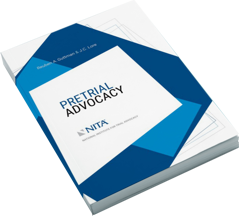At year’s end, here in the nation’s capital there is the ritual they call “credit claiming.” Legislators claim credit for everything from corn and soy subsidies, programs or pieces of legislation. Credit claiming is not limited to elected officials — even government agencies do it.
At the U.S. Department of Justice, its press office, pointing to nearly $6 billion in 2014 recoveries under the False Claims Act, is spinning claims of success. The FCA, a law dating back to Lincoln’s presidency, allows the government to seek redress from individuals or entities that have in some way caused false statements to be used in the process of securing payment of government monies. The FCA is mostly known for its “qui tam” provisions that allow private citizens — commonly called whistleblowers — to bring suit in the name of the government, and to be paid a bounty from recovered funds. Once these suits are brought, the DOJ may intervene and pursue the case with or without the help of the whistleblower and his or her counsel.
For its part, the media has trumpeted the DOJ’s claim to success as have public interest groups and even some whistleblower lawyers. No doubt, the $5.69 billion in recoveries is a high water mark for FCA recoveries; but is there more to the story?
It turns out that of the $5.69 billion, $2.3 billion was recovered from healthcare providers, including the pharmaceutical industry, and $3.1 billion was recovered from the financial services industry including the big banks. This means that $5.4 billion was recovered from entities that had no direct procurement relationship with the federal government or the states. How does this work? The FCA makes it unlawful to file a false claim or to “cause”one to be filed. Marketing drugs for purposes not approved by the Food and Drug Administration, and provision of healthcare that is not medically necessary are just some examples of conduct that cause the Medicare and Medicaid systems —and state and federal health plans — to pay out dollars that should not have been paid.
That only a fraction of the $5.69 billion was recovered from direct procurement contractors, including Boeing and Hewlett Packard, is telling. It is a statistic that has remained a constant year in and year out as most FCA recoveries have come from entities — particularly healthcare providers — where the accused culprit does not have a direct government procurement relationship. Indeed, the top fifteen FCA recoveries of all time are with entities, including Abbott, Bank of America, and GlaxoSmithKline, that have no direct procurement relationship with the government.
Does this mean there are more indirect relationships than direct procurement relationships? Of course not. The Department of Energy, the Department of Defense, the Department of Education, the Environmental Protection Agency, and the Department of Transportation, spend billions of dollars each year on direct procurement contracts. But with these agencies spending so much money on private contractors, why is it that only a fraction of the 2014 FCA recoveries can be attributed to contractors working with these mammoth government agencies? Is it that these agencies do such a stellar job of managing their contractors?
Not a chance. These agencies are undoubtedly rife with contractors who skimp on standards, violate specifications, and overbill for their work. In 2011, the bi-partisan Commission on Wartime Contracting estimated that the military efforts in Iraq and Afghanistan resulted in $31-60 billion in contractor waste and fraud. Commission Co-Chair, Michael Thibault, former Deputy Director of the Defense Contractor Audit Agency, noted at the time that while large numbers of contractors were used in these military efforts, the government had no effective management and oversight of contractor spending.
One looming question is whether the agencies themselves are so in need of their contractors that they are willing to overlook derelictions. Are these agencies protecting rogue contractors and, if so, does it make a difference when it comes to civil prosecution under the FCA?
First, the statistics seem to point in this direction. Second, absent agency cooperation, the Department of Justice is — to some degree — unable to secure relief under the FCA. Think of it this way: the DOJ is the law firm for the government, and its clients are government agencies. If the client says it has not been harmed, it is hard for the lawyer to pursue litigation. Naturally an agency cannot waive requirements that are matters of law or regulation, but it is still no easy task to pursue a case when the client is not cooperative.
Now what about this $5.69 billion figure? While we know this was the amount recovered, what we do not know is whether it represents single, double, or treble damages, and whether civil penalties — between $5,000 and $11,000 for each false claim —were waived or collected. In settling cases, the government has made a practice of waiving penalties and not imposing the full three times damages provided by law. But does this really make sense, particularly when — despite the optics of large FCA sanctions — some accused culprits are undeterred with repeat violations of the FCA?
No doubt the $2.3 billion in healthcare fraud recoveries is a large chunk of change. Yet by whose standards? In 2010, Acting Deputy Attorney General, Gary Grindler, projected that healthcare fraud accounted for between 3 and 10 percent of total government healthcare spending, or between 27 and 80 billion dollars, in that year alone. By these lights, accused fraudsters can still walk away with exponentially more than they are being required to put back.
The point of all this is that it is time to ask hard questions of our government credit claimers. And maybe the media should take a lesson from whistleblowers, who make their mark by questioning norms and claims that are commonly accepted.
